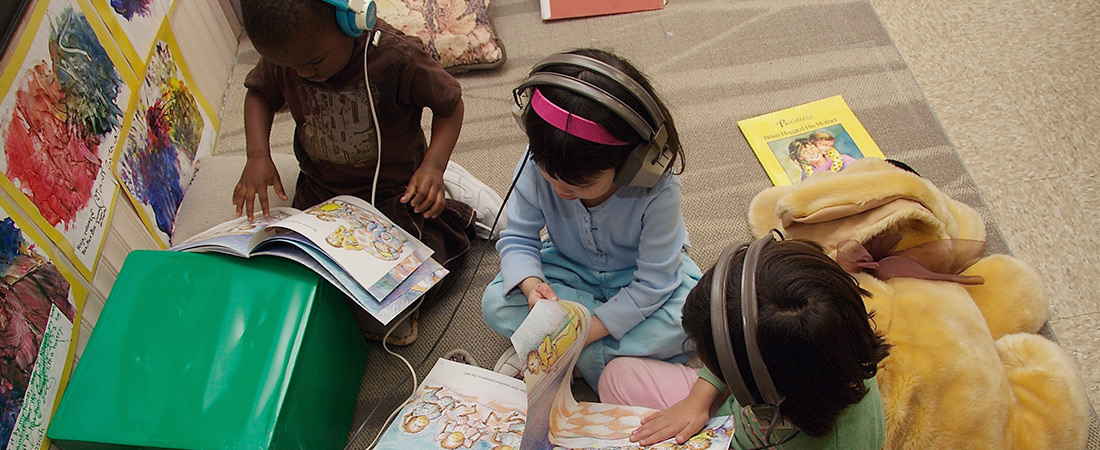4 Ways to Support Children's Well-Being

Preschool should be a time of play, happiness, and learning for young children. But across the United States, preschool students are expelled at 3.5 times the rate of students in grades K–12. These expulsions disproportionately affect children of color, especially boys. Black children make up 18 percent of preschool enrollment but 48 percent of preschool children suspended more than once.
These early actions can have a long-term impact. Children who are suspended in preschool are 10 times more likely to drop out of high school, experience academic failure, or have a negative school attitude than children who were not suspended or expelled. EDC early childhood experts Bertha Gorham and Dawn Nixon believe that fostering a supportive, child-centered environment is key to preventing expulsions—and to raising children who are ready to succeed in school. Here, they offer four tips for making this happen.
1. Consider the whole child
Most expulsions and suspensions happen when students have physical outbursts, hurt other children, or disregard rules. Children’s behavioral difficulties can be caused by multiple factors, including traumatic experiences, an emerging developmental disability or mental health issue, or even the way in which a child’s day unfolds. Nixon believes that challenging behaviors are less acts of defiance than they are cries for help.
“I think some children who show behavioral issues are really just responding to their environment,” says Nixon. “Imagine the child who had a long ride to school, and then is expected to sit for circle time right at the beginning of the day. That might be really difficult. If the child acts out, it’s probably because he or she needs to move. The child’s not trying to be disruptive.”
In fact, a breakdown in any number of daily routines could trigger stress and pave the way for a rocky time in class. Nixon says that rather than sending the child home for the day, teachers, caregivers, mental health consultants, and parents should all work together to identify possible causes of the behavior.
“Children do well if they can,” says Nixon. “If something is going sideways, then the adults in that child’s life need to identify what’s going wrong and brainstorm strategies to support the child.”
2. Prioritize social and emotional learning
Gorham says that social and emotional skills—which include learning how to resolve conflicts, bond with teachers, make friends, and be part of a group—help protect against negative behaviors. The importance of these skills was made clear to her during a 1998 child wellness study she conducted in North Carolina.
“The people I interviewed—teachers, parents, doctors, and pastors—were most concerned about children’s attention deficit disorders, hyperactivity, inability to follow directions, and insufficient services available to children in the mental health system,” she says. “Kindergarten teachers believed that if parents and preschools could just teach children basic social skills, then academic development would be no problem.”
However, Gorham worries that the greater emphasis placed on academic achievement at the expense of behavioral and socialization skills could have a negative, long-term impact on the ability of some children to cope in the classroom.
“You have to teach children how to make friends and resolve conflicts,” she says. “Learning and care environments that support children’s healthy social and emotional development pave the way for academic success.”
3. Confront bias
Nixon says that building an inclusive environment begins with confronting implicit biases about behavior, race, and gender. She points to recent research from Yale that indicates teachers have implicit biases about who is going to behave in a classroom and who is not.
“Teachers disproportionately look for where they think the problem is going to be, and that often means children of color and boys,” she says. “Some students are unfairly singled out.”
Addressing those biases can have a real impact on the lens through which a teacher views a child’s behavior and, by extension, the suspension and expulsion rates. Nixon recommends that programs should track suspensions and expulsions and then use that data to examine programmatic practices to address any disparities found.
“You have to talk about it,” she says. “Normalizing conversations around implicit bias can lead to increased awareness. Only then can we mitigate its impact.”
4. Invest in mental health consultation
While suspending or expelling a child for challenging behavior may seem a logical solution to an immediate problem, it does nothing to resolve the core issues that are driving that behavior.
Infant and early childhood mental health consultants can play a critical role in supporting both adults and children. They can often identify the issues underlying children’s challenging behaviors and then help teachers and families find constructive ways to resolve them. In fact, a study of Connecticut’s Early Childhood Consultation Partnership found that using mental health consultation led to a decrease in teachers’ ratings of children’s external and problem behaviors.
“Mental health consultants can offer a behavioral health lens that might otherwise be missing from the classroom,” says Gorham. “It’s about helping teachers and caregivers get more resources and strategies, so that they can help change the environment for a child who might be struggling.”
When mental health consultants, caregivers, and parents work together, a struggling child can get back on track.
“Young children are eager to play, learn, and make friends; like adults, they want to be happy and successful in what they attempt to do,” says Gorham. “It’s our job to make that happen for them.”